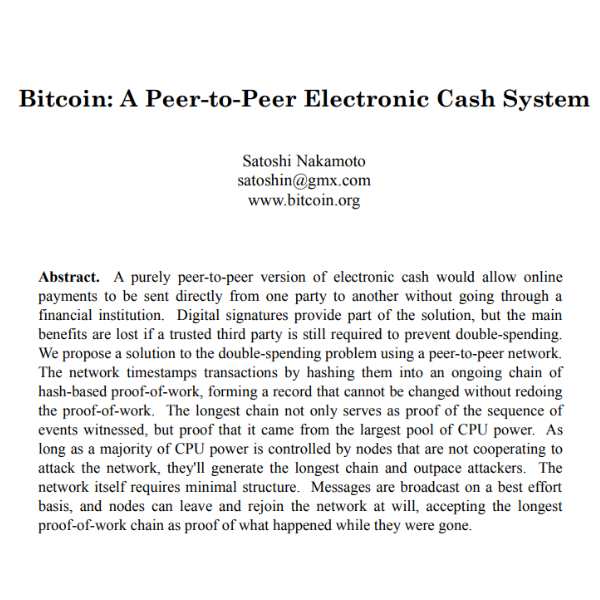| Bitcoin’s white paper is a document published in 2008 by Satoshi Nakamoto |
Perhaps, it is not a true milestone for Bitcoin because Bitcoin itself did not yet exist. On this day, more than 13 years ago, Satoshi Nakamoto published the most important document in the history of the crypto universe-the Bitcoin White Paper. You can still download it and read it today.
I suggest you try to read it even if it seems too difficult. Originally published in 2008 by “pseudonymous” inventor Satoshi Nakamoto, the Bitcoin Whitepaper is one of the most groundbreaking works in computer science since the Internet, laying the foundation for peer-to-peer electronic cash and its underlying blockchain technology.
The Bitcoin Whitepaper
The Bitcoin white paper is a document published in 2008 by an individual or group of individuals under the pseudonym Satoshi Nakamoto. It outlines the technical details and design of the Bitcoin network, including its decentralized, peer-to-peer structure and the use of a distributed ledger, known as a blockchain, to track and verify transactions. The white paper also describes the mining process and the limited supply of Bitcoin embedded in the protocol. The publication of the white paper is considered a pivotal moment in the history of Bitcoin, as it laid the foundation for the development of the world’s first and most widely used cryptocurrency.

Major points of importance
Bitcoin’s white paper is an important document that outlines the technical details and design of the Bitcoin network. Some of the most important points in the white paper include:
Decentralization: Bitcoin is designed as a decentralized transaction protocol, without the intermediary of third-party trustees (such as banks or governments). This is accomplished through a peer-to-peer network where each node maintains a copy of the public ledger (the blockchain).
Solution of double spending problem: Bitcoin addresses the problem of double spending in digital through the implementation of a timestamped public ledger of transactions (the blockchain), which is constantly verified by a network of “miners.”
Blockchain and Proof-of-Work: the white paper introduces the concept of blockchain, a public ledger of all verified transactions. The protocol uses a consensus algorithm called Proof-of-Work (PoW), which requires nodes to solve a complex cryptographic problem in order to add a new block to the chain. This mechanism incentives honesty in the network by providing a reward for the miner who solves the cryptographic problem first.
Issuance of new Bitcoins: new Bitcoins are issued as a reward for miners who solve the PoW problem and confirm transactions on the network. The rate of issuance decreases exponentially over time, with the total number of Bitcoins that will ever exist limited to 21 million.
Pseudonymity: unlike traditional payment systems, Bitcoin transactions are pseudonymous. Bitcoin wallet addresses are not directly related to the real identity of users, but all transactions are public and traceable on the blockchain.
Security: the white paper emphasizes the robustness of the Bitcoin protocol. To launch an attack on the protocol, an attacker would need more than 51 of the total computing power of the network, a task that is virtually unachievable given the enormous amount of computing power distributed globally.
These key points highlight the unique characteristics of the Bitcoin network and its potential to revolutionize the way financial transactions are conducted.
Overall, the white paper outlines an innovative approach to creating a digital currency based on decentralization criteria and the power of cryptography and computer networks. The ideas presented in the white paper have since been widely adopted and have influenced the development of many other cryptocurrencies and blockchain-based systems.
